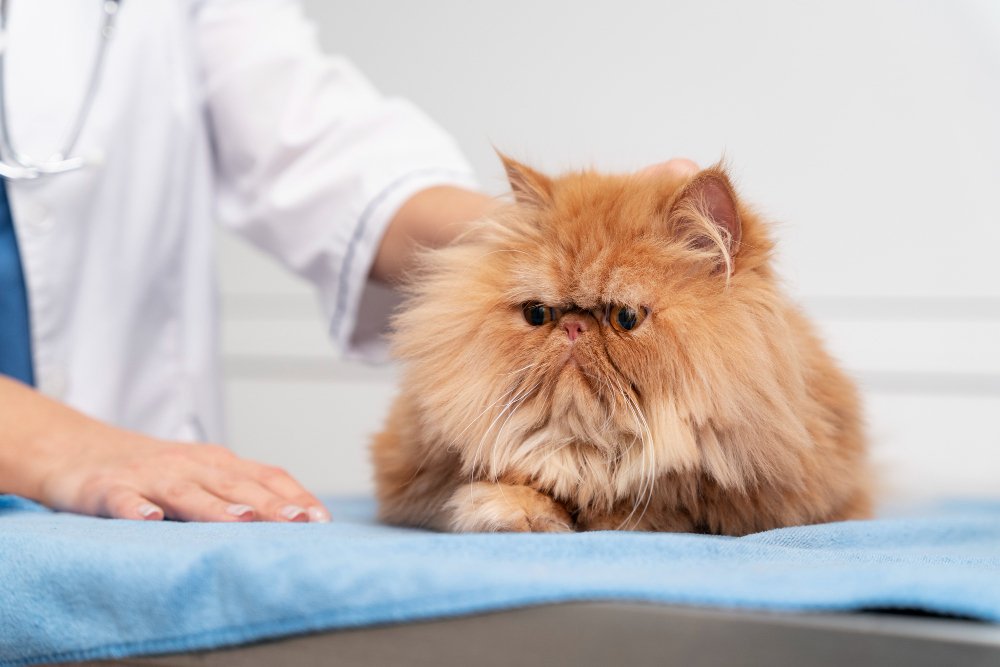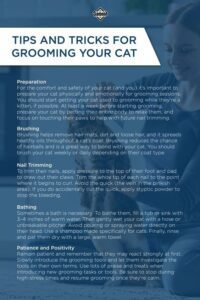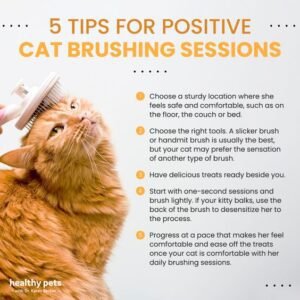Is your cat grooming excessively? This might be a sign of deeper issues. In our guide, ‘Cat Over-Grooming: Causes and Solutions,’ we examine why cats over-groom and how to effectively address it. From health-related concerns to stress or boredom, we provide comprehensive solutions. Discover ways to help your cat break the over-grooming habit, ensuring their overall health and happiness.
Causes of Over-Grooming in Cats
Stress and Anxiety
Stress and anxiety can be significant factors in causing over-grooming in cats. Cats are highly sensitive animals and can easily become stressed by changes in their environment, such as moving to a new home, the addition of a new pet or person, or disruptions in their routine. This stress and anxiety can manifest in excessive grooming as a way for the cat to soothe themselves.
Medical Conditions
Various medical conditions can lead to over-grooming in cats. It’s essential to rule out any underlying health issues that could be causing the behavior. Some common medical conditions that can cause over-grooming include allergies, skin infections, hormonal imbalances, and parasites. If your cat is over-grooming, it’s crucial to seek veterinary attention to identify and treat any possible medical causes.
Allergies
Allergies can trigger intense itching and discomfort in cats, leading them to over-groom to find relief. Cats can be allergic to a wide range of substances, including certain foods, environmental allergens like pollen or dust mites, and even flea bites. Identifying and managing the allergens can help alleviate the need for excessive grooming.
Parasites
Fleas and other parasites can cause tremendous discomfort to cats, leading them to over-groom in an attempt to alleviate the itchiness. Even just one flea bite can set off a cycle of excessive grooming as the cat tries to remove the irritants from their fur. Regular flea prevention and treatment are crucial to prevent parasitic infestations and subsequent over-grooming.
Boredom and Lack of Stimulation
Cats are naturally curious and active animals that require mental and physical stimulation. A lack of environmental enrichment and stimulation can lead to boredom and frustration, which may manifest as over-grooming. Providing your cat with toys, scratching posts, and interactive playtime can help alleviate their need for excessive grooming.
Social Factors
Social factors can also contribute to over-grooming in cats, particularly in multi-cat households. Cats are territorial creatures, and conflicts or hierarchies within the home can induce stress and anxiety, leading to over-grooming. Ensuring that all cats have their space and resources, as well as addressing any potential social issues, can help reduce the likelihood of over-grooming behavior.
Signs and Symptoms of Over-Grooming
Excessive Hair Loss
One of the most evident signs of over-grooming is excessive hair loss. Cats may groom themselves to the point of baldness in certain areas, primarily on their abdomen, chest, and hind legs. The hair loss may be patchy and irregular, indicating excessive grooming behavior.
Bald Patches
When cats over-groom, they may create bald patches on their skin. These bald patches are a result of incessant licking or biting of the fur, causing the hair to fall out. The skin underneath may appear red, irritated, or inflamed, indicating a problem that needs to be addressed.
Skin Irritation and Inflammation
Over-grooming can lead to skin irritation and inflammation. Continuous licking or biting can cause the skin to become red, swollen, and even develop sores or scabs. It’s crucial to observe your cat’s skin for any signs of irritation or inflammation and seek veterinary attention if necessary.
Obsessive Licking or Biting
If you notice your cat constantly licking or biting their fur, even to the point of obsession, it may be a sign of over-grooming. Cats who engage in excessive grooming behavior may spend an excessive amount of time licking themselves and may appear anxious or restless.
Presence of Hairballs
Over-grooming can lead to an increased production of hairballs in cats. When cats groom themselves excessively, they end up ingesting a significant amount of loose hair. This hair can accumulate in their digestive system and form hairballs, causing gastrointestinal issues. The presence of hairballs may indicate a problem with over-grooming.
Diagnosing the Underlying Cause
Veterinary Exam
If your cat is exhibiting signs of over-grooming, it’s crucial to take them to a veterinarian for a thorough examination. The veterinarian will conduct a physical examination, checking for any signs of skin issues or underlying health conditions that may be causing the excessive grooming behavior.
Blood Tests and Allergy Testing
Blood tests may be recommended to rule out any underlying medical conditions that could be causing the over-grooming. Additionally, allergy testing may be conducted to identify any specific allergens that may be triggering the behavior.
Skin Scraping and Microscopic Examination
In cases where skin infections or parasitic infestations are suspected, a veterinarian may perform skin scrapings or microscopic examinations to identify the presence of parasites, fungal infections, or other skin abnormalities.
Behavioral Evaluation
A behavioral evaluation may also be conducted to assess any underlying stress or anxiety that may be contributing to the over-grooming behavior. This evaluation may include observing the cat’s behavior in different situations and discussing the cat’s environment and routine with the owner.
Treatment Options for Over-Grooming
Addressing Stress and Anxiety
If stress and anxiety are identified as the underlying cause of over-grooming, it’s important to address these issues to alleviate the behavior. This may involve creating a calm and predictable environment for the cat, providing hiding places, and using calming pheromone products. In severe cases, medications may be prescribed to help reduce the cat’s anxiety.
Treating Underlying Medical Conditions
If a medical condition is found to be causing the over-grooming, it’s essential to treat the underlying issue. This may involve medication or other treatments to manage allergies, skin infections, hormonal imbalances, or parasitic infestations.
Managing Allergies and Parasites
If allergies or parasites are identified as triggers for over-grooming, steps should be taken to manage and control these factors. This may include regular flea prevention and treatment, hypoallergenic diets or environmental changes to reduce exposure to allergens.
Providing Environmental Enrichment
To combat boredom and stimulate your cat mentally and physically, provide them with environmental enrichment. This can include toys, scratching posts, puzzle feeders, and interactive playtime with their human companions.
Behavior Modification Techniques
In some cases, behavior modification techniques may be necessary to address the over-grooming behavior. These techniques can involve redirecting the cat’s attention to alternative activities, providing positive reinforcement for appropriate grooming behavior, and discouraging excessive grooming through environmental changes.
Preventing Over-Grooming in Cats
Maintaining a Stress-Free Environment
To prevent over-grooming, it’s essential to maintain a stress-free environment for your cat. Minimize changes in their environment, provide adequate resources for all cats in a multi-cat household, and create a calm and safe space for your cat to retreat to.
Regular Veterinary Check-ups
Regular veterinary check-ups are crucial to monitor your cat’s overall health and catch any potential issues before they escalate. Routine examinations can also help identify early signs of stress or medical conditions that may contribute to over-grooming.
Proper Nutrition and Hydration
Providing your cat with a balanced and nutritious diet is essential for their overall well-being. Ensure they have access to fresh water at all times and feed them a high-quality cat food that meets their specific dietary needs.
Regular Grooming and Hair Control
Regular grooming can help prevent over-grooming by minimizing the occurrence of tangles and mats in your cat’s fur. Brushing your cat’s coat can help remove loose hair and reduce the likelihood of hairballs. If your cat has difficulty grooming themselves due to age or health issues, you may need to assist them more frequently.
Monitoring and Addressing Social Dynamics
If you have multiple cats in your household, it’s important to monitor their social dynamics and address any conflicts or tensions promptly. Ensure each cat has their space, litter boxes, and resources to prevent stress and territorial issues that can contribute to over-grooming.
By understanding the causes, signs, and treatment options for over-grooming in cats, you can effectively address and prevent this behavior. Always consult with a veterinarian for proper diagnosis and guidance in managing your cat’s grooming habits and overall well-being. With proper care and attention, your cat can maintain a healthy and comfortable coat while enjoying a stress-free life.



